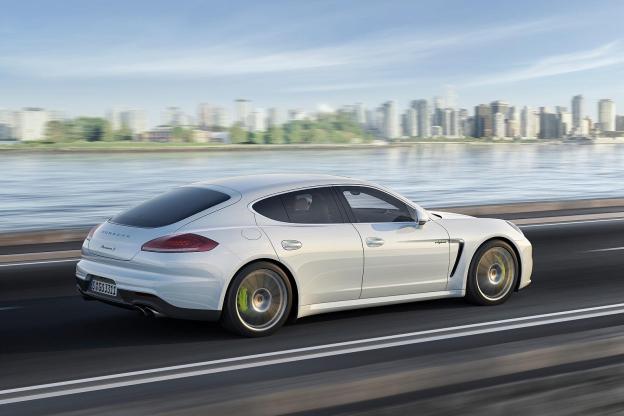
Within the next few years, Porsche will include hybrid drivetrain technology in all its models, including the 911. Don’t think for a red-hot second that this spells some kind of neutering of Porsche’s fire-breathing sporting machines. Hybrids don’t have to be wimpy, just look at the Porsche 918 Spyder supercar for a perfect example.
Porsche’s widespread hybridization represents a big push by the German automaker to reduce emissions and fuel consumption. Starting somewhere around 2016, the newfangled Porsche hybrid powertrain system will be included in the next-generation Panamera S E-Hybrid, which will replace the current Panamera Hybrid.

The E-Hybrid will have an all-electric range of 11- to 23-miles and an EV top speed of 86mph running on its 94 horsepower electric motor. When E-Hybrid kicks on its supercharged 3.0-liter V6, it should be good for 168mph.
According to Autocar, Porsche sought out weight saving at ever level of the new E-Hybrid, including the wiring. In place of the standard copper wire loom, Porsche has designed an aluminum loom instead.
Interestingly, to meet the new European Union’s emissions standards, the new E-Hybrid gasoline V6 won’t be allowed to couple to the standard eight-speed automatic transmission for the first 30 seconds until it has pre-heated the catalytic converters. This means if the onboard battery pack is flat, you won’t be going anywhere for a half minute. The E-Hybrid, then, will not make for an idea getaway car.

Porsche is said to be working on an induction charging system, which will be able to be installed into most standard garage floors. For wired charging, however, the E-Hybrid will recharge in 3.8 hours on 120-volt and 2.3 hours on 220.
This is all very exciting us here at Digital Trends. While the Panamera S E-Hybrid sounds very clever indeed, we’re most intrigued to see how the new hybrid powertrains will affect the 911’s performance going forward.
For those of you who bemoan the PDK transmission supplanting the seven-speed manual across most of the 911 range, save the entry-level, you better cherish it (or buy it) while you can. We can virtually guarantee the next-gen 911 with E-Hybrid drivetrain bits will not have a manual at any level.
Editors' Recommendations
- Hybrid model will be ‘highest performance 911 of all,’ Porsche CEO says
- Porsche’s updated 911 gets the one thing it was missing: A manual transmission
- Porsche expands its hybrid range with three gasoline-electric Cayennes
- Bentley will offer a hybrid powertrain on every model by 2023


